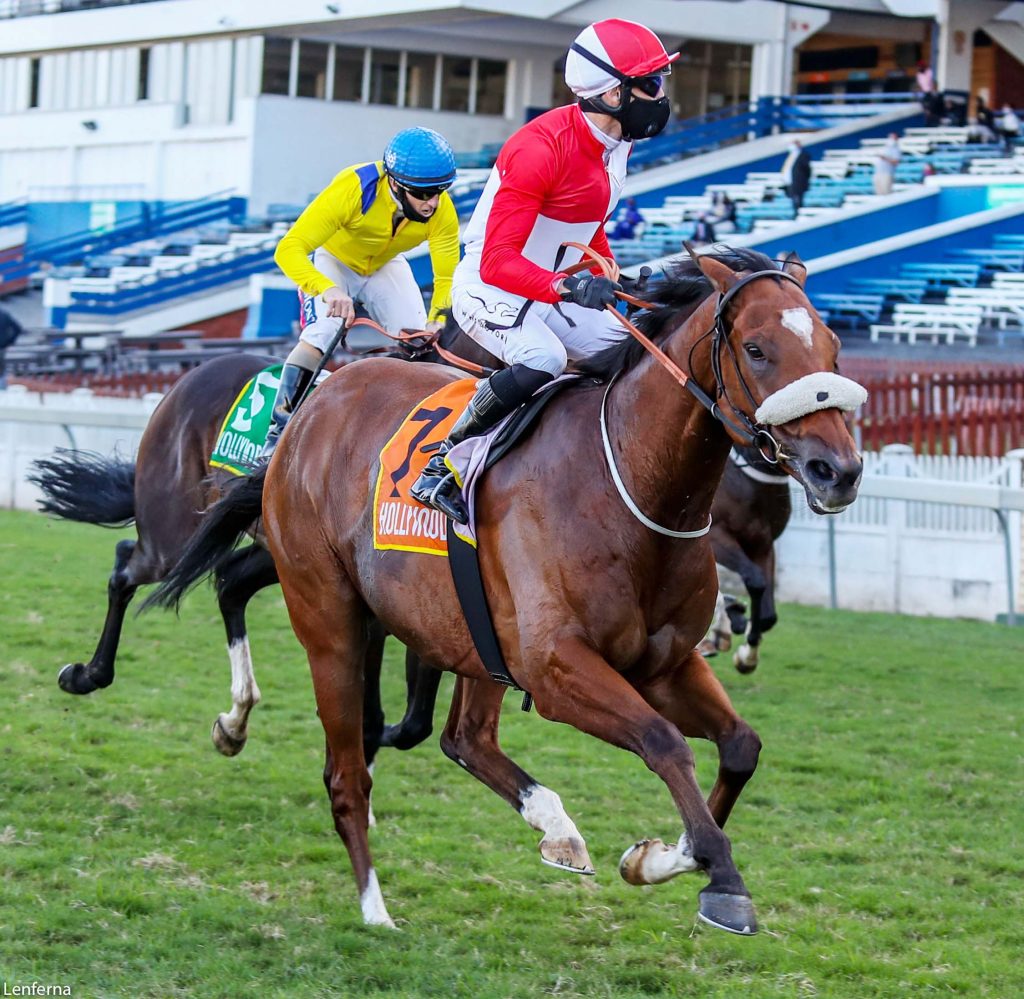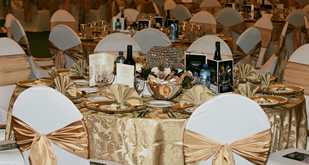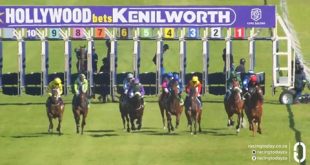
David Thiselton
RAINBOW BRIDGE’S most recent victory saw him joining a 1930s great called Moonlit as the second most successful Cape Town Met horse in history behind the legendary three-time winner of the big race, Pocket Power.
Rainbow Bridge’s Met record is virtually identical to Moonlit’s and another historical string which ties the two horses together is that the grandfather of Rainbow Bridge’s trainer Eric Sands rode in all three of the Mets won by Moonlit.
Sands reflected on Rainbow Bridge’s second Met win this week.
He said both he and respective jockeys Luke Ferraris and Warren Kennedy had been confident of the chances of Rainbow Bridge and Golden Ducat.”
Sands added, “I felt if I supported Golden Ducat I would be betraying Rainbow Bridge and vice versa, so I wouldn’t have minded if either of them had won. It is great for the Rattrays and it is also great for breeder Mary Slack. The horses Mary breeds are like her children to her.”
Sands continued, “I said publicly before the race that the biggest danger was not Belgarion but Richard Fourie (unbeaten in four starts on Rainbow Bridge) as he knows both horses and might have known of a tactical plan (such as pace) that could have possibly affected Rainbow Bridge’s chances.”
Sands sent a message to Ferraris a day or two before the race reading, “I know I have the right jockey on Rainbow Bridge, you have convinced me.”
He said, “I meant it to and it gave him a bit of extra confidence.”
Sands had wondered before the season whether the many close fights Rainbow Bridge had been in had affected him mentally.
He had therefore told Ferraris that the Met was the aim, it was over his right distance, and that he should try and avoid getting him into a fight in the L’Ormarins Queen’s Plate. That might have been why Ferraris kept Rainbow Bridge on a lone path down the centre in the Queen’s Plate from where he stayed on well for second, although on the other hand Rainbow Bridge does have a tendency to hang to the right.
Sands continued, “Luke said he felt like a different horse by the time of the Met.”
Sands always tries to picture how the race is going to pan out and said, “African Night Sky had pulled when fancied in the 2018 July so I thought he was possibly going to set a suitable pace for Justin’s runners. I couldn’t imagine Running Brave leading in her first start around a left hand turn. Silver Operator was also a possible pacemaker as Mario Ferreira owns both him and Princess Calla.”
Sands’ only instruction to the two jockeys was to not cost each other the race in a situation where one of them was going nowhere.
That situation did in fact arise as Rainbow Bridge, having cruised up from last place in the straight, got stuck behind Golden Ducat and African Night Sky.
Sands was at that point focused on Golden Ducat because from his angle he he could not see Rainbow Bridge.
Ferraris coolly extracted himself from the situation by easing his mount and switching him outward.
Sands saw Golden Ducat was going nowhere so focused on Rainbow Bridge who was by now unwinding a devastating finish on the outside.
In his opinion the pace of the race had been good. He said, “The horses who came from the back came out in front.”
He added, “The fact Luke couldn’t get through when he wanted to probably worked in his favour.”
Rainbow Bridge still had plenty in the tank when finally starting his run at about the 300 metre mark, so it was going to now only be about his terrific turn of foot and he was not going to have to endure another fight like he did in the 2020 Met when going down by a neck to One World.
Sands said, “All credit to the kid. The result is in the frame and I look like a hero but all the credit must go to the horses and to that mare (Halfway To Heaven, record-breaking dam of Grade 1 winners Rainbow Bridge, Golden Ducat and Hawwaam).”
Sands felt the best explanation for Golden Ducat’s disappointing performance was that his victory in the Grade 2 Glorious Goodwood Premier Trophy had taken too much out of him as he had to fight back after being headed.
Both horses are now resting on the farm and Sands will soon be discussing their SA Champions Season plan with owner Mike Rattray. He said he was going to try and keep them apart again until the Vodacom Durban July, as he had done last year.
In October 1936 the Syd Garrett-trained Moonlit, like Rainbow Bridge, won his first Met as a four-year-old, prevailing in the Handicap event over 1800m by 1,75 lengths carrying 111 pounds under Stanley Amos. The following year he was beaten half-a-length into second carrying 135 pounds and giving the victor Asbestos II 32 pounds. Stanley Amos ironically was aboard Asbestos II and his brother “Cookie” was aboard Moonlit. In the 1938 Met Moonlit produced one of the great weight carrying feats in SA racing history. He made light of his 145 pound (65.77kg) burden and won easily by 1,25 lengths under Cookie Amos.
Sands’ grandfather Arthur Edgar Saunders, who was to win the Met in 1940 on a horse called Ming, finished downfield in all three of Moonlit’s Met victories.
The Australian-born Arthur Edgard later changed the surname to Sands and his son Arthur Harold also became a jockey before turning to training. Harold did not enjoy dealing with clients so passed the reins over to his son Arthur Eric at the Vaal in 1983. Eric had his first winner at Bloemfontein with his first ever runner and two years later moved to Milnerton where he has been ever since.







